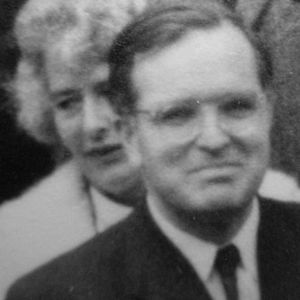Aage Niels Bohr facts for kids
Aage Niels Bohr was a Danish physicist. He was born on June 19, 1922, in Copenhagen, Denmark. He was the fourth son of Margrethe and Niels Bohr. His father, Niels Bohr, was also a very famous physicist.
Aage Bohr followed in his father's footsteps. He became a professor at the University of Copenhagen. In 1975, he won the Nobel Prize in Physics. He received this award for his important discoveries. He helped us understand how the tiny parts inside an atom's center, called the nucleus, move and are built.
Contents
Exploring the Atomic Nucleus
Aage Bohr's main work was about the atomic nucleus. This is the very small, dense center of an atom. It contains protons and neutrons. Understanding the nucleus helps us learn about matter and energy.
Early Life and Learning
Aage Bohr grew up in a home filled with science. His father, Niels Bohr, was a pioneer in quantum physics. This meant Aage was often around many brilliant scientists. These scientists would visit his home to discuss new ideas. This environment helped shape his interest in physics from a young age.
He studied physics at the University of Copenhagen. During World War II, his family had to leave Denmark. They moved to Sweden and then to the United States. In the U.S., Aage worked on the Manhattan Project. This was a secret project to develop the first atomic bomb. He worked as his father's assistant. This experience gave him a deep understanding of nuclear physics.
His Nobel Prize Discoveries
After the war, Aage Bohr returned to Denmark. He continued his research on the atomic nucleus. Scientists at the time had two main ideas about the nucleus. One idea was that particles inside the nucleus moved independently. The other idea was that the nucleus acted like a liquid drop.
Aage Bohr, along with Ben Mottelson and James Rainwater, combined these ideas. They showed that both views were partly right. They discovered that the nucleus can have a "collective motion." This means the nucleus as a whole can change shape. At the same time, individual particles inside it still move around. This new model helped explain many things about how atomic nuclei behave. Their work was very important for nuclear physics. It helped us understand how atoms release energy.
Later Career and Impact
Aage Bohr became a professor at the University of Copenhagen. He also became the director of the Niels Bohr Institute. This institute was founded by his father. He led the institute from 1962 to 1975. He continued to do research and teach.
His work helped other scientists. It led to new experiments and theories. His discoveries are still important today. They help us understand nuclear energy and the structure of matter. Aage Niels Bohr passed away on September 8, 2009, in Copenhagen. He left a lasting impact on the world of physics.
See also
 In Spanish: Aage Niels Bohr para niños
In Spanish: Aage Niels Bohr para niños


